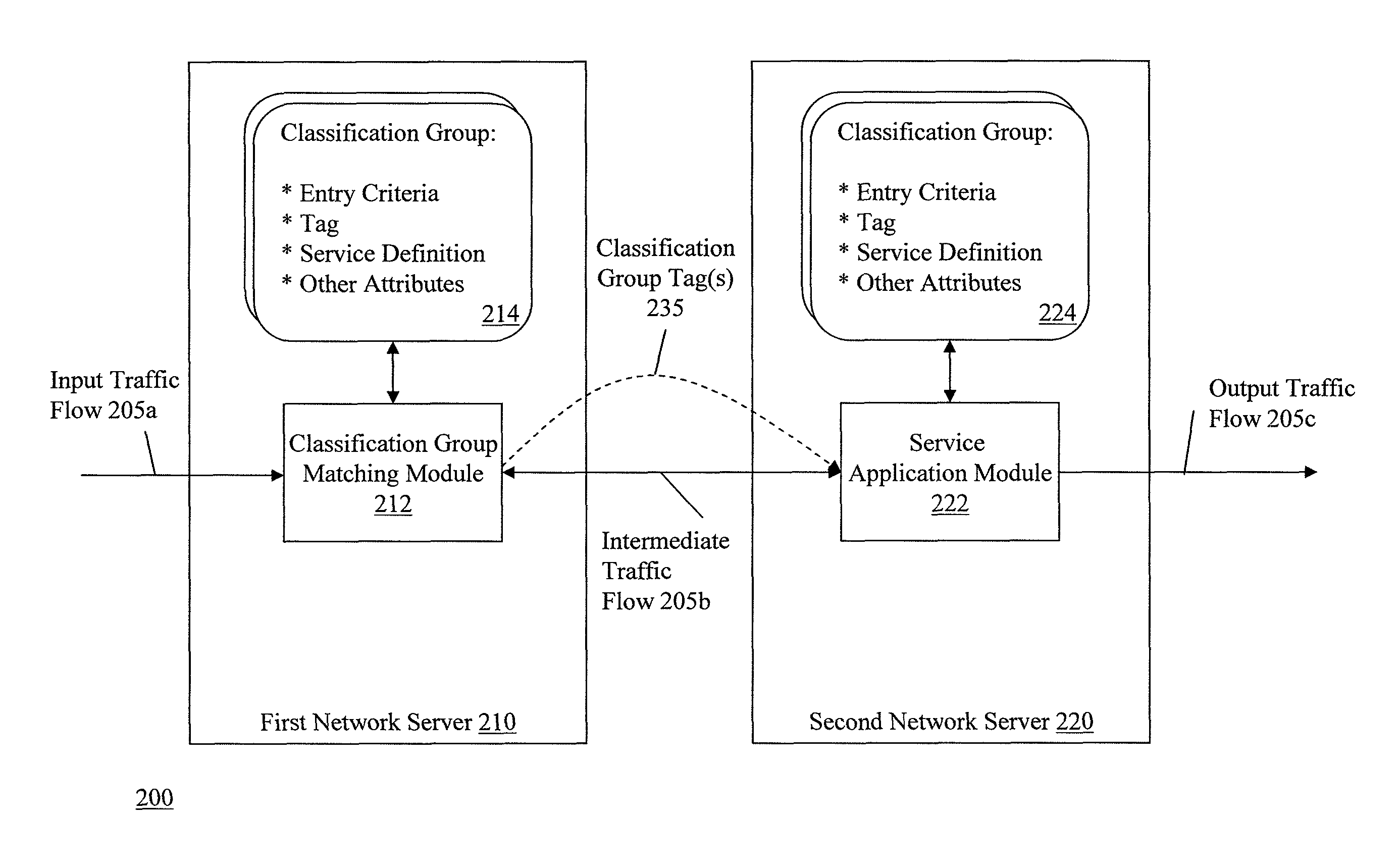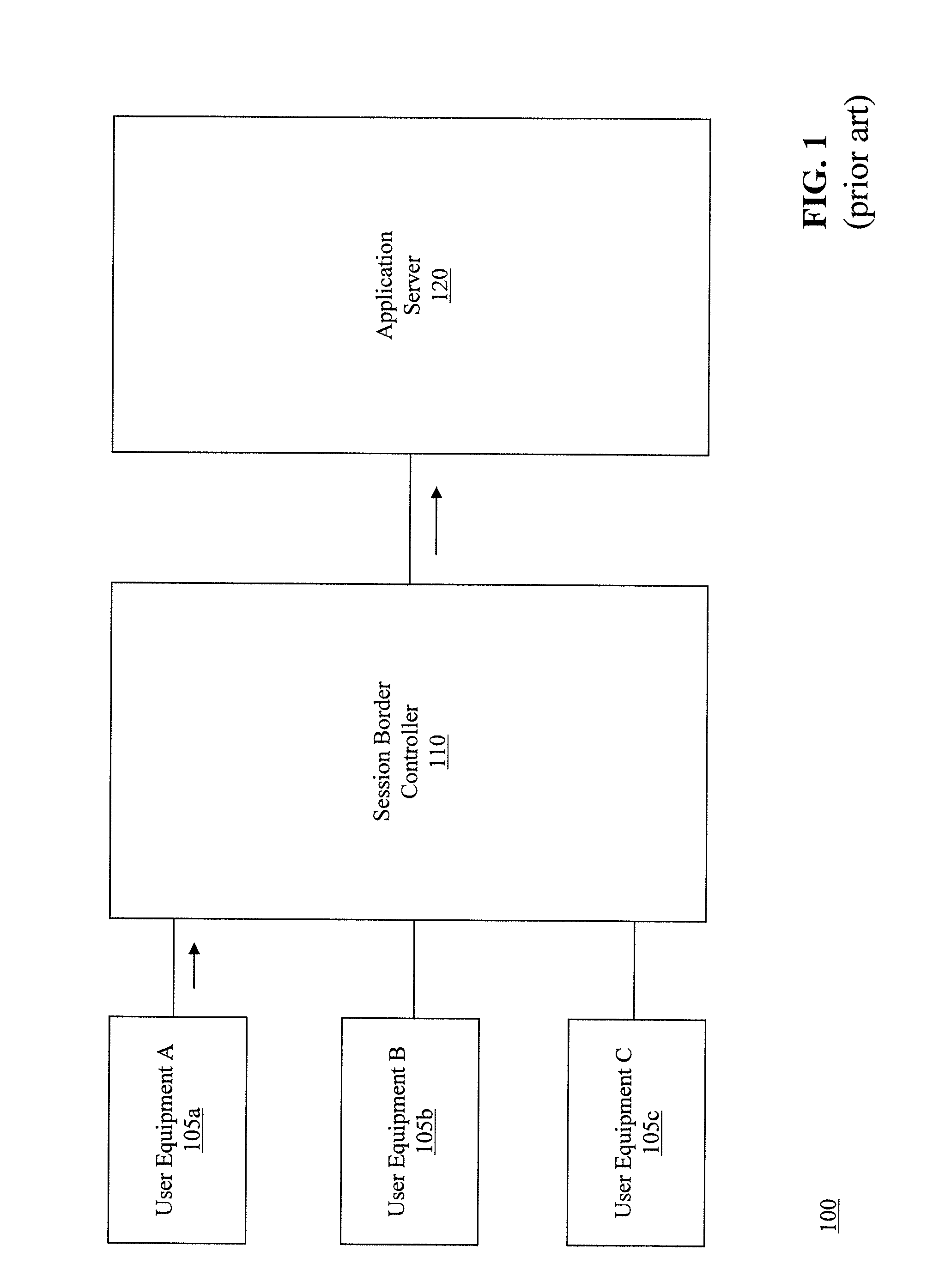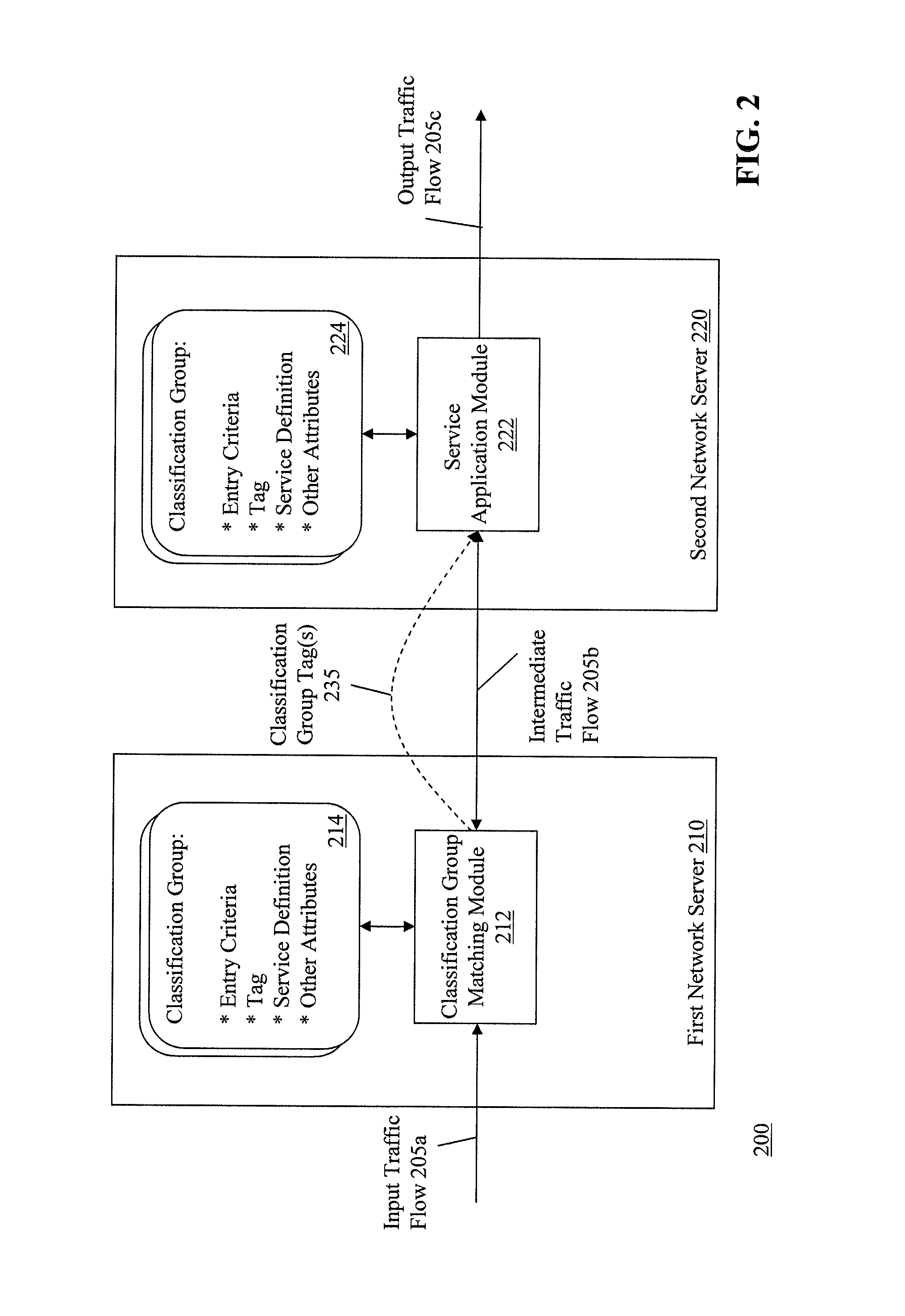Dynamic classification and grouping of network traffic for service application across multiple nodes
a network traffic and service application technology, applied in the field of dynamic classification and grouping of network traffic for service application across multiple nodes, can solve the problems of network operator compromising its desired classification schema, not matching the view of network operator, and incurring an operation, administration and management (oa&m) cos
- Summary
- Abstract
- Description
- Claims
- Application Information
AI Technical Summary
Benefits of technology
Problems solved by technology
Method used
Image
Examples
example use case 1
[0114
[0115]FIG. 7 is a block diagram of an exemplary system 700 for dynamic classification and grouping of network traffic for service application across multiple nodes. In the following example, a service provider or other operator of a network wishes to record calls originating at a specific access network segment. In this example, UE A 701 or UE B 702 belongs to the access network segment 705 that the operator wishes to record. Therefore, traffic flows originating from UE A 701 or UE B 702 match the entry criteria to belong to a “RECORD_CALL” classification group 711 defined at the first network server 710 (e.g., a session border controller). The classification group 711 is configured to include the “RECORD_CALL” tag 712 in the internodal signaling from the first network server 710 to the second network server 720 (e.g., an application server). Traffic flows that originate from UE A 701 or UE B 702 have the “RECORD_CALL” tag 712 added as the traffic flow progresses to the second ...
example use case 2
[0118
[0119]Referring back to FIG. 2, in this use case, the first network server 210 and the second network server 220 have classification group “X” (e.g., 214 and 224) defined at each server, respectively. The first network server 310 matches a traffic flow (e.g., 205), assigns membership to classification group “X” (e.g., 214), and applies a tag 235 associated with group “X”214 to the traffic flow. The second network server 220 receives the traffic flow and compares the attributes of the traffic flow against the entry criteria of classification group “X”224 located at the second server 220. In some embodiments, classification group “X”224 on the second network server 220 can also have independent criteria, depending on how the operator configures the groups. For example:[0120]a. Receiving Tag X 235 from the first network server 210 can override the entry criteria associated with classification group X 224 and the traffic flow is automatically assigned to the group 224. In this exam...
example use case 3
[0122
[0123]Continuing with FIG. 2, in this use case, the first network server 210 has defined classification group X 214, but the second network server 220 has not defined classification group. In this example, the second network server 220 ignores the tag 235 applied to the traffic flow 205 at the first network server 210, and the second network server 220 applies default service logic to the traffic flow.
PUM
 Login to View More
Login to View More Abstract
Description
Claims
Application Information
 Login to View More
Login to View More - R&D
- Intellectual Property
- Life Sciences
- Materials
- Tech Scout
- Unparalleled Data Quality
- Higher Quality Content
- 60% Fewer Hallucinations
Browse by: Latest US Patents, China's latest patents, Technical Efficacy Thesaurus, Application Domain, Technology Topic, Popular Technical Reports.
© 2025 PatSnap. All rights reserved.Legal|Privacy policy|Modern Slavery Act Transparency Statement|Sitemap|About US| Contact US: help@patsnap.com



